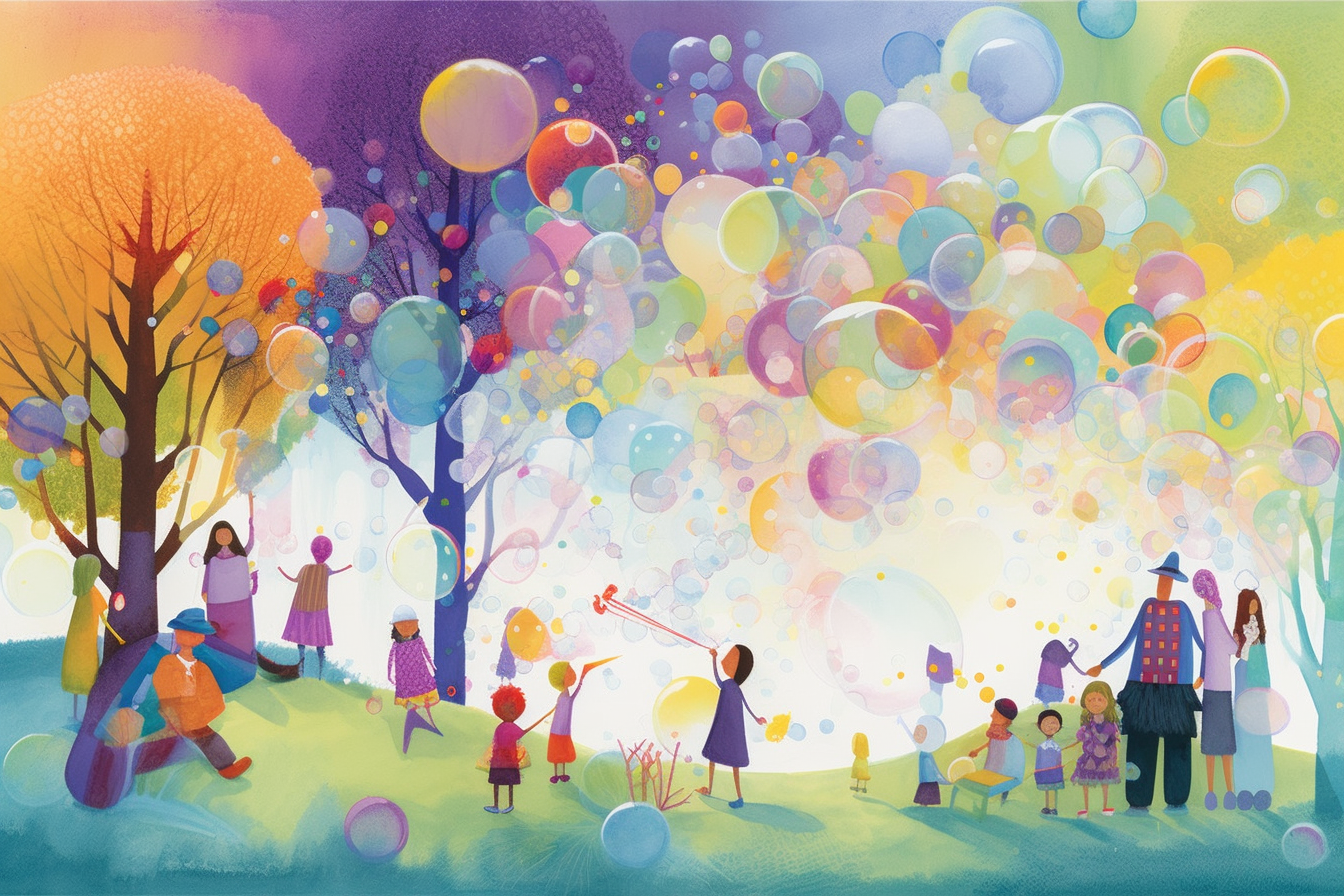
Bubbles in the park.
Making homemade bubbles is a fun and easy activity that can be enjoyed by both kids and adults.
The history of bubbles can be traced back to ancient times, with evidence of children playing with soap bubbles found in ancient Greek and Roman art. However, it wasn’t until the 17th century that bubbles became a popular pastime in Europe.
In 1664, an Englishman named John Evelyn wrote a book titled “Sylva: A Discourse of Forest-Trees and the Propagation of Timber,” in which he described blowing soap bubbles as a fashionable pastime among the wealthy. The book also included a recipe for making bubble solution using soap, water, and herbs.
During the 18th century, bubble blowing became even more popular in Europe, with people using a variety of implements to create bubbles, such as clay pipes, glass rods, and even chicken feathers. In the 19th century, commercial bubble mixtures began to appear, and by the early 20th century, bubbles had become a popular children’s toy.
Today, bubbles continue to be a popular activity for both children and adults, with numerous bubble toys and gadgets available for purchase. The science behind bubbles has also been studied extensively, with researchers exploring the physics of how bubbles form and interact with each other, as well as the mathematical principles that govern their behavior.
Here is a simple recipe to make your own bubbles at home:
Ingredients:
-
1/2 cup dish soap
-
4 cups water
-
1/4 cup corn syrup or glycerin
-
Optional: food coloring
Instructions:
-
In a large bowl, mix together the dish soap and water.
-
Add the corn syrup or glycerin and stir gently to combine. These ingredients help to make the bubbles stronger and more durable.
-
If desired, add a few drops of food coloring to create colorful bubbles.
-
Let the mixture sit for about an hour before using to allow the ingredients to combine and create stronger bubbles.
-
To use, dip a bubble wand or a straw into the bubble mixture and blow gently to create bubbles.
Tips:
-
Use a large container to mix the bubble solution, so that it is easy to dip the bubble wand or straw into.
-
If the bubbles are not strong enough, add a bit more corn syrup or glycerin to the mixture.
-
Avoid stirring the mixture too vigorously, as this can create foam and make it difficult to blow bubbles.
-
For the best results, use the bubble mixture within a few hours of making it.